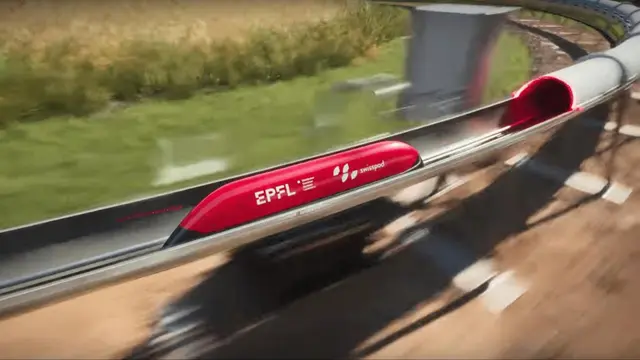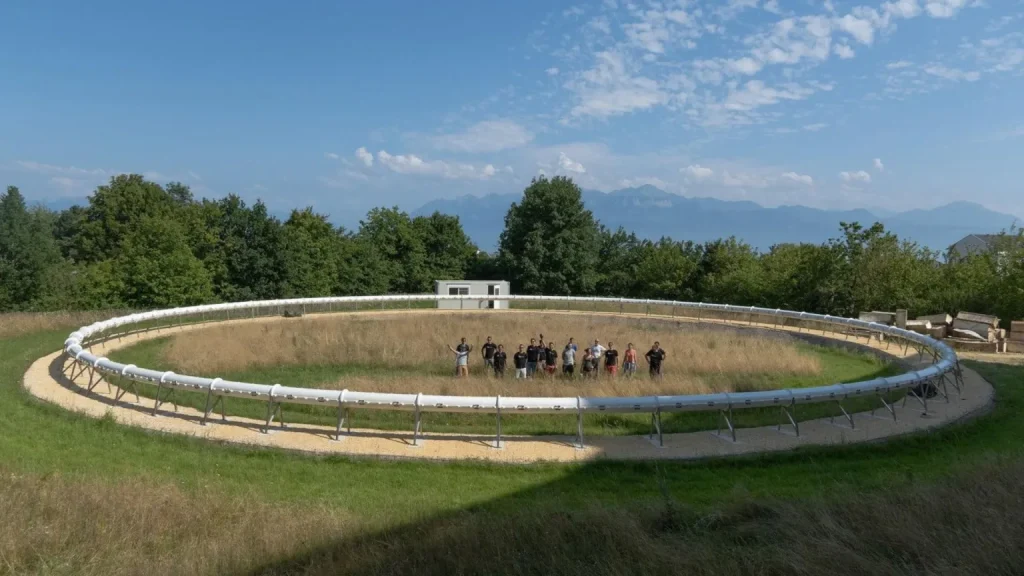On November 6, 2024, Europe marked a significant milestone in transportation technology.
In an achievement that is setting the stage for future innovations, the continent’s first operational Hyperloop test facility has successfully completed the longest vacuum capsule journey to date.

The experiment simulated an 88-mile Hyperloop journey on a 7.3-mile test track, achieving peak speeds of 303.4 mph in scaled-down trials.
The real-world application could see these systems significantly enhancing transit speeds and sustainability, fulfilling ambitions initially set out in Elon Musk’s Hyperloop concept.
This remarkable test was conducted at the EPFL facility in Switzerland, as part of the LIMITLESS project.
The project is a collaborative effort involving personnel from the École Polytechnique Fédérale de Lausanne (EPFL), the School of Business and Engineering Vaud (HEIG-VD), and Swisspod Technologies.
Their focus is on harnessing linear induction motor systems for traction and levitation to create a more sustainable form of transportation.
The test facility itself features a circular loop track with cutting-edge infrastructure—the track spans a circumference of 125.6 meters and a diameter of 40 centimeters, scaled to one-twelfth of what a full-size Hyperloop system would require.
This test facility allows for rapid prototyping and iteration of the various technologies that will comprise the Hyperloop infrastructure.
The leap in performance has profound implications for the future of high-speed travel.
At its core, Hyperloop technology leverages a low-pressure tube system combined with electric propulsion to minimize air resistance.
The aim is to make travel faster than a commercial jet and far more energy-efficient.
During the recent tests conducted within a meticulously controlled low-pressure environment, the Hyperloop capsule demonstrated full autonomy.
It relied on an internal power source for energy, navigation, and propulsion, eliminating the need for external power transfers.
This independence not only makes it adaptable for future implementations but also more cost-effective by minimizing infrastructure requirements.
Denis Tudor, CEO of Swisspod, highlighted the societal impact that such advancements promise, suggesting that Hyperloop could soon catalyze significant shifts in the transportation sector.

This is especially relevant as Swisspod prepares to test Hyperloop freight transportation in a larger facility in the U.S., aiming to bring Hyperloop technology one step closer to passenger services.
The supporting infrastructure, with its lightweight and energy-efficient design, aims to revolutionize travel by significantly reducing travel times and environmental impact.
The Hyperloop’s promise of decreased carbon emissions aligns well with global sustainability targets, potentially impacting industries beyond transportation, such as automotive, rail, aerospace, and metro systems.
This achievement propels the conversation surrounding high-speed transportation innovations and reaffirms the viability of Hyperloop technology as a cornerstone of future transit solutions.
With continued development and testing, this innovation beacon lights the path to potential paradigm shifts in how people and goods traverse continents.
As the LIMITLESS project moves forward, it sets a precedent not only for innovation but for collaboration across disciplines and borders.
The project exemplifies the potential that technological convergence holds for crafting a more interconnected, efficient, and sustainable world.
